ترمیم دندان چیست؟
هر روز دندانهای ما در معرض فشارها و مواد مختلفی قرار میگیرند و با گذشت زمان، دندانهای ما در معرض خطر شکستگی، پوسیدگی و از دست دادن درخشندگی کلی قرار میگیرند. خوشبختانه، دندانپزشکی ترمیمی کلینیک آلما درمانهای متعددی را برای کمک به حفظ دندانهای شما ارائه میدهد. ترمیم دندان در واقع کنترل مشکلات دهان و دندان و اصلاح شرایط زیبایی آن است. به عبارت بهتر در ترمیم دندان، ساختار صدمه دیده یا از دست رفته دندانها تصحیح میشود. ترمیم دندان باعث بهبود ظاهر دندانها خواهد شد و در نهایت نه تنها به سلامت دندانهای شما کمک خواهد کرد، بلکه لبخند زیبا و فریبندهای هم برای شما خلق خواهد کرد.
ترمیم دندان بر ترمیم یا جایگزینی دندان ها تمرکز دارد. هدف اصلی آن بهبود سلامت دهان و عملکرد جویدن است. نمونه هایی از روش های ترمیمی دندان عبارتند از تاج، بریج، ایمپلنت و دندان مصنوعی. ترمیم دندان یک رویه دندان پزشکی است که به احیای عملکرد، انسجام، ظاهر و ساختار دندانهای صدمه دیده یا از دست رفته میپردازد. به کمک این رویه بسیاری از مشکلات دندان برطرف میشود. دندانپزشکان عمومی به راحتی قادرند بسیاری از رویههای ترمیم دندان را انجام دهند.
ترمیم دندان در واقع کنترل مشکلات دهان و دندان و اصلاح شرایط زیبایی آن است. به عبارت بهتر در ترمیم دندان، ساختار صدمه دیده یا از دست رفته دندانها تصحیح میشود. ترمیم دندان باعث بهبود ظاهر دندانها خواهد شد و در نهایت نه تنها به سلامت دندانهای شما کمک خواهد کرد، بلکه لبخند زیبا و فریبندهای هم برای شما خلق خواهد کرد.
نمونه هایی از روش های ترمیمی دندان عبارتند از تاج، بریج، ایمپلنت و دندان مصنوعی. ترمیم دندان یک رویه دندان پزشکی است که به احیای عملکرد، انسجام، ظاهر و ساختار دندانهای صدمه دیده یا از دست رفته میپردازد. به کمک این رویه بسیاری از مشکلات دندان برطرف میشود. دندانپزشکان عمومی به راحتی قادرند بسیاری از رویههای ترمیم دندان را انجام دهند.
در این مقاله، به مزایای روشهای ترمیم دندان و خدمات مختلف موجود در آنها میپردازیم. برای دریافت نوبت جهت ترمیم دندان با هزینه مناسب با کلینیک آلما تماس بگیرید ۰۲۱۶۶۹۱۶۶۲۴

مزایا و هدف خدمات ترمیم دندان
دندانپزشکی ترمیمی مزایای متعددی برای پیر و جوان دارد. مزیت اصلی این است که از عملکرد صحیح دندانهایتان اطمینان حاصل میکنید. میتوانید از غذا خوردن لذت ببرید و با اعتماد به نفس صحبت کنید. همچنین از سلامت دهان و دندان بهتری برخوردار خواهید شد. با جلوگیری از پوسیدگی و بیماری لثه، سلامت دهان شما حفظ میشود. علاوه بر این، خطر عوارض بعدی را کاهش داده و لبخند خود را جوانتر میکنید. با این حال، با افزایش سن، نادیده گرفتن مشکلات دندانهایمان دشوارتر میشود. در نهایت، برای محافظت از سلامت دهان و دندان خود در درازمدت، باید با هر ترسی که داریم روبرو شویم.
هدف اصلی از ترمیم دندان تا حد امکان حفظ دندانهای طبیعی است. پس از آن و در شرایطی که امکان حفظ دندان طبیعی نباشد از روشهای جایگزین دندان از دست رفته، برای پر کردن فضاهای خالی دهان و بین دندانهای دیگر استفاده میشود. پرکردن این فضاهای خالی در دهان به حفظ دندانهای باقیمانده کمک میکند، زیرا این فضاهای خالی شرایط مناسبی را برای تشکیل پلاک روی دندانهای باقیمانده در دهان فراهم میآورند و آنها را آسیبپذیر خواهند کرد.
به همین دلیل در ترمیم دندان، تنها حفظ دندان صدمه دیده مورد توجه قرار نمیگیرد، بلکه سلامت سایر دندانهای باقیمانده در دهان نیز به دقت مورد معاینه قرار میگیرند. زمانی که دندان صدمه دیده و سپس از دست میرود، این مسئله از اهمیت بالاتری برخوردار خواهد شد، چرا که در این حالت فشار بیشتری به سایر دندانها طبیعی وارد خواهد شد. بهترین کار، انتخاب روش ترمیم دندان مناسب با شرایط دهان و دندان و البته بودجه مالی شما میباشد.
هزینه ترمیم و پوسیدگی دندان 1404
| خدمت | تعرفه عمومی | تعرفه تخصصی |
| جراحی نسج سخت | 23,550,000 | 26,610,000 |
| ترمیم یک سطحی آمالگام | 11,910,000 | 12,760,000 |
| ترمیم دو سطحی آمالگام | 15,000,000 | 15,940,000 |
| ترمیم سه سطحی آمالگام | 19,760,000 | 20,910,000 |
| ترمیم یک سطحی کامپوزیت | 14,530,000 | 15,380,000 |
| ترمیم دو سطحی کامپوزیت | 19,380,000 | 21,080,000 |
| ترمیم سه سطحی کامپوزیت | 24,110,000 | 26,480,000 |
| ترمیم بیلدآپ کامپوزیت | 35,440,000 | 37,870,000 |
| ترمیم بیلدآپ آمالگام | 22,480,000 | 23,890,000 |
| درمان ریشه تک کانال | 25,860,000 | 30,410,000 |
| درمان ریشه دو کانال | 35,260,000 | 41,360,000 |
| درمان ریشه سه کانال | 42,600,000 | 50,040,000 |
برای اطلاع از قیمت خدمات دقیق تر با Dental Clinic Alma تماس بگیرید. ۰۲۱۶۶۹۱۶۶۲۴
Repair Tooth Decay It is also used to repair cracked, broken teeth or teeth that have been damaged by nail biting and gnashing of teeth.
To fill and repair decayed teeth, patients are often asked which filling material is the most suitable and best. It should be said that all materials used have advantages and disadvantages that depend on the patient's condition. Regardless of the type of dental restoration, proper oral hygiene and regular examination by a dentist at least once every 6 months, is a very effective factor in preventing the occurrence and recurrence of dental problems.
هزینه ترمیم دندان با بیمه
برخی از شرکت های بیمه سلامت دندان دارای حداکثر پوشش مادام العمر یا سالانه هستند. باتوجه به این که با چه بیمه ای قرار داد دارید و نوع بیمه شما تکمیلی است یا خیر، مقدار پوشش هزینه های بیمه متفاوت می باشد.
- Kosar Insurance
- بیمه پارسیان
- Pasargad Insurance
- بیمه آسیا
- بیمه آتیه سازان
- Dana insurance
- Mellat Bank
- Saderat bank
- Refah Bank
- National Bank
- Nation Insurance
- Alborz Insurance
- Iran Insurance
شرکت های بیمه نام برده شده بیشتر هزینه های ترمیم دندان را تحت پوشش قرار داده اند. در کلینیک دندانپزشکی آلما می توانید از تمامی خدمات دندانپزشکی بیمه خود به طور کامل بهره مند شوید. برای اطلاع بیشتر از قیمت انواع درمان دندان و همچنین هزینه ایمپلنت دندان با بیمه روی نام بیمه خود کلیک کنید.
انواع روش های ترمیم دندان پوسیده
امروزه به لطف گزینههای متنوع برای ترمیم دندان تقریباً تمامی مشکلات دندانی برطرف میشود. این روشها مشکلاتی چون پوسیدگی، صدمهدیدگی یا حتی از دست دادن دندان را برطرف میکنند و لبخند شما را اصلاح و زیبا خواهند کرد. با توجه به مشکلات دندانی شما، دندانپزشک معمولاً دو نوع ترمیم دندان را پیشنهاد میدهد.
-
ترمیم مستقیم
در ترمیم دندانهای مستقیم تمامی اقدامات لازم در داخل دهان تکمیل و انجام میشود. این رویه تحت عنوان پرکردگی هم شناخته میشود که شامل قرار دادن یک ماده سازگار با ساختار دندان بر روی حفره تمیز شده و عاری از عفونت و پوسیدگی است. این مواد سپس بر روی دندان ثابت میشوند و ساختار و ظاهر دندان صدمه دیده و یا پوسیده را احیا میکنند. ماده ترمیمی معمولاً از رزین یا کامپوزیت ساخته می شود.
جنس و نوع مواد پرکننده دندان
مواد مختلفی برای پر کردن و ترمیم دندان وجود دارد. 4 مورد از رایج ترین مواد عبارتند از:
- آمالگام: آمالگام یک ماده فلزی است که از ترکیب جیوه، نقره، قلع و مس ساخته می شود. آمالگام یکی از ارزان ترین و مقاوم ترین مواد برای پر کردن دندان است، اما به مرور زمان تیره می شود.
- کامپوزیت: کامپوزیت یک ماده رزینی است که با رنگ دندان مطابقت دارد. کامپوزیت یکی از محبوب ترین مواد برای پر کردن دندان است، زیرا ظاهر طبیعی دندان را حفظ می کند.
- گلاس اینومر: گلاس اینومر یک ماده رزینی است که با دندان پیوند می خورد. گلاس اینومر معمولاً برای ترمیم پوسیدگی های کوچک استفاده می شود.
- سرامیک: سرامیک یک ماده غیر فلزی است که از خاک رس و مواد دیگر ساخته می شود. سرامیک یکی از محکم ترین مواد برای پر کردن دندان است، اما گران تر از مواد دیگر است.
پر کردن دندان رایجترین روش ترمیمی مورد استفاده دندانپزشکان است. از پر کردن دندان برای درمان پوسیدگی، شکستگی و ساییدگی دندان استفاده میشود. پر کردن دندان، حفره دندان را با یکی از چندین ماده، از جمله موارد زیر، پر میکند:

ترمیم دندان با آمالگام
این پرکنندههای فلزی از ترکیب چندین فلز، از جمله نقره، مس و جیوه ساخته میشوند. آمالگامها معمولاً برای پر کردن دندانهای آسیاب استفاده میشوند، زیرا ظاهر فلزی آنها باعث میشود بیشتر به چشم بیایند. پر کردن و پروتز های درون دندانی معمولا مقرون به صرفه ترین راه هستند که با کمترین میزان تهاجم می توانند مشکل بیماران را برطرف کنند. برای این کار معمولا از سه نوع ماده اولیه استفاده می شود:
ترمیم دندان با کامپوزیت
رزین کامپوزیت با رنگ دندانهای شما مطابقت دارد و استحکام بالایی برای تحمل جویدن روزمره ارائه میدهد. زیبایی دلپذیر آنها، آنها را به محبوبترین انتخاب برای پر کردن دندان تبدیل کرده است. پروتز های کامپوزیت که از رزین های ترکیبی تولید می شوند، بسیار محبوب هستند چرا که می توانند رنگی متناسب با رنگ سایه دندان های اصلی شما پیدا کنند. با این حال به نسبت آمالگام نقره، این گزینه بسیار گران تر است و دوام آن نیز پایین تر خواهد بود. به صورت میانگین باید هر ۵ سال یک بار این پروتز های کامپوزیتی را تعویض کنید.
ترمیم دندان با پروتز های اینومر
پروتز های اینومر شیشه ای به کمک ترکیب کردن شیشه سیلیکات و اسید پلی اکریلیک ساخته می شوند تا یک ترکیب مستحکم و به رنگ کرم تولید شود. این پروتز ها تا حدی ضعیف هستند و عموما بر روی دندان های کودکان و سطح دندان هایی که در حوزه گاز گرفتن غذا نیستند مورد استفاده قرار می گیرند. از یک طرف دیگر، قیمت آن ها نسبتا متعادل است، تغییر حالت نداده و منقبض نمی شوند و دارای مواد حاوی فلوراید هستند که از پوسیدگی دندان جلوگیری به عمل می آورد.
یک نوع دیگر از ترمیم مستقیم، باندینگ مستقیم دندان ها است. در این پروسه درمانی از یک ترکیب خاص استفاده می شود تا ترک خوردگی های روی دندان را تعمیر کنند، شکل و حالت دندان را تغییر دهند و یا فاصله بین دندان ها را از بین ببرند. این ماده باندینگ خاص جوری طراحی می شود که بتواند ظاهری مشابه با خود دندان داشته باشد و سپس به کمک یک لامپ خاص در درون دهان فرد خشک می شود.
-
ترمیم غیر مستقیم دندان
در این رویه، ساخت قطعات مورد نیاز در خارج از دهان انجام میشود که شامل لمینت دندان ، تاجهای دندانی، بریجها، ایمپلنتها، اینله و آنله است.در حقیقت ترمیم دندان غیرمستقیم شامل روشهای دائمی یا ثابت هستند. با توجه به اینکه رویههای کاری به اقدامات، ابزار و مواد بیشتری نیاز دارد، هزینه بالاتری هم دارند. اما از طرفی میتوانند ظاهر زیبا و باثباتتر برای دندانهای شما ایجاد کنند.
از آنجای که این پروسه به کار بیشتری نیاز دارد (مراحلی از قبیل، معاینه دهان و دندان ها، آماده کردن دندان، ساخت مواد و یک ونیر موقت، روکش های دندانی قیمت این روش معمولا بالا است. از طرفی آن ها می تواند ظاهر دندان های شما را بهبود بخشند و یک راهکار پایدار، طولانی مدت و خوب را برای آسیب های دندانی شدید شما باشند.
در این روش ترمیم، دندانپزشک در جلسه اول دندان را تراش می دهد تا پوسیدگی از بین برود. سپس قالبی از دندان تهیه می شود و به لابراتوار ارسال می شود. در لابراتوار، دندانپزشک پروتزی از ماده ای مانند طلا، سرامیک یا رزین می سازد که با دندان بیمار مطابقت دارد. در جلسه دوم، پروتز به دندان بیمار متصل می شود.
باندینگ دندان
باندینگ دندان یک تکنیک ترمیم دندان است که در آن دندانپزشک از یک ترکیب رزین کامپوزیت برای بهبود ظاهر نقصهای جزئی دندان استفاده میکند. آنها رزین را با رنگ دندان شما مطابقت میدهند تا حد امکان طبیعی به نظر برسد. سطح دندان با یک محلول اسیدی مخصوص پوشیده میشود تا چسبندگی رزین افزایش یابد.
پس از اعمال محلول ژل روی دندان طبیعی، دندانپزشک رزین را اعمال کرده و آن را شکل میدهد تا ظاهر دلخواه را ایجاد کند. با باندینگ دندان، میتوانید افزایش طول دندان و تغییر شکل دندان را برای دستیابی به لبخندی کاملاً متقارن داشته باشید. پس از اعمال، رزین سخت ، صیقل داده میشود تا به طور یکپارچه با باقی دندان دیده شود.
ونیرها، یا همان باندینگ های غیر مستقیم دندانی، لایه های باریکی از پورسلین هستند که می توانند جایگزین و یا پوسته روی مینای یک دندان آسیب دیده، لک شده و یا دارای شکل نامناسب باشند. این روکش ها متناسب با شکل و رنگ دندان های شما طراحی و تولید می شوند و بسیار جذاب و خواستنی هستند چرا که رنگ و شفافیت آن ها شباهت زیبایی به مینای دندان طبیعی شما دارد.
Tooth crown
اولین نوع تکنیک ترمیم دندان، روکش دندان است که یک قطعه سرامیکی است که روی دندانهای آسیبدیده قرار میگیرد. این روکش برای بازگرداندن ساختار و بهبود ظاهر کلی دندان طراحی شده است. دندانپزشک مینای دندان موجود را تراش میدهد تا مطمئن شود که روکش میتواند روی دندان قرار گیرد. سپس، از دندانهای اطراف قالبگیری کرده و آن را به آزمایشگاه میفرستد. پس از رسیدن به آزمایشگاه، از این قالب برای ساخت روکش سفارشی که با شکل و رنگ دندانهای دیگر مطابقت دارد، استفاده میشود.

روکش های دندان
ونیرهای دندانی لایههای نازک و طبیعی از مواد هستند که دندانهای موجود را میپوشانند و یک گزینه عالی برای ترمیم دندان هستند. آنها عمدتاً برای اهداف زیبایی طراحی شدهاند، اما یک لایه محافظتی نیز ایجاد میکنند. یکی از رایجترین نگرانیهایی که مردم در مورد ونیرها دارند این است که آیا به دندانها آسیب میرسانند یا خیر. در روشهای سنتی ونیرها، دندانپزشک باید دندانهای بیمار را تراشیده و به شکل میخ درمیآورد تا بتوان آنها را روی دندان قرار داد. با این حال، روشهای جدیدتر ونیرها بسیار کمتر تهاجمی هستند. آنها به کار آمادهسازی بسیار کمی نیاز دارند و طوری طراحی شدهاند که بدون آسیب رساندن به دندان طبیعی فرد، قابل جابجایی باشند.
روکش های دندانی که به آن ها سر پوش های دندان نیز می گویند ، موادی هستند که به شکل کامل سطح دندان ها را می پوشانند. این روکش ها معمولا بر روی یک سطح از قلب آماده شده و به کمک چسب مخصوص دندان قرار می گیرند. در نتیجه قدرت و ظاهر یک دندان بهبود خواهد یافت. روکش ها ممکن است به کمک فلز ( نظیر طلا یا تیتانیوم)، سرامیک (نظیر زیرکونیا، سیلیکا یا آلومینا) و یا یک کامپوزیت ترکیبی فلز و سرامیک تولید شوند.
پل های دندان
بریج دندان مجموعهای از روکشهای به هم پیوسته هستند که به جای دندانهای از دست رفته قرار میگیرند. با توجه به نحوه اتصال آنها به دندانهای اطراف، آنها عمدتاً به عنوان راهحلهای دائمی ترمیم دندان در نظر گرفته میشوند. همچنین میتوانید از بریجهای متحرک استفاده کنید، اما این نوع کمتر رایج هستند.
پل های دندانی، در واقع دندان های مصنوعی هستند که بین دندان های واقعی افرد قرار می گیرند تا فضای بین آن ها را پر کنند به عنوان مثال در جایی که دندانی کشیده شده باشد و یا وجود نداشته باشد. دندان طبیعی که این پل ها را ساپورت می کند را اباتمنت می گویند. یک پل ممکن است فیکس باشد (در بین دو اباتمنت قرار داشته باشد)، فقط به یک اباتمنت متصل باشد و یا به اباتمنت های نزدیک خود با چسب متصل گردد. پل های دندانی عموما از جنس پوسلین، فلز و یا ترکیب پورسلین و فلز ساخته می شوند.

Dental implants
ایمپلنتهای دندانی پیچهای تیتانیومی هستند که جایگزین ریشههای پوسیده دندان میشوند. از آنها برای اتصال استخوان دندان موجود برای نگه داشتن تاج در جای خود استفاده میشود. دندانپزشک میتواند ایمپلنتها را در هر ناحیهای از دهان نصب کند، بنابراین گزینههای ترمیمی متنوعی هستند. ایمپلنت اساساً به استخوان فک پیچ میشود و لنگری برای نگهداشتن فیکسچر جدید ایجاد میکند. پس از نصب ایمپلنت، شاهد بهبود ساختار فک و جویدن خود خواهید بود.
ایمپلنت ها ابزاری مخصوص دندان هستند که به کمک عمل جراحی به استخوان فک افراد متصل می شوند. ممکن است از Dental implants برای نگه داشتن یک روکش دندان یا پل استفاده شود. این پروسه می تواند معمولا به قدم های متعددی نیاز داشته باشد تا یک پروتز موقت ایجاد شود، دندان آسیب دیده کشیده شود، محل مربوط به ایمپلنت آماده شود، پروتز دائمی تولید شود و در نهایت در جای خود قرار گیرد. پس از اتمام این پروسه ممکن است سه تا شش ماه طول بکشد تا استخوان جدید در اطراف ایمپلنت شکل گیرد که آن را در یک مکان به خوبی نگه دارد.
اینله و آنله
این ترمیمها برای آسیبهای قابل توجه دندان که پر کردن دندان جواب نمیدهد، استفاده میشوند. آنها در دندانپزشکی از مواد بادوام ساخته میشوند. اینلهها در جایی استفاده میشوند که کاسپ دندان سالم است و آنلهها برای کاسپهای دندان آسیبدیده استفاده میشوند.
فرآیند و مراحل پر کردن دندان
پر کردن دندان معمولاً یک پروسه دو مرحله ای است. در مرحله اول، دندانپزشک دندان را آماده می کند. این کار شامل تراش دندان، برداشتن پوسیدگی و جرم گیری است. در مرحله دوم، دندانپزشک ماده ترمیمی را به دندان اضافه می کند. پر کردن در مطب دندانپزشکی انجام می شود و نیازی به مراقبت متخصص ندارد.
نکاتی برای مراقبت از دندان های ترمیم شده
پس از ترمیم دندان، مهم است که از دندان های خود به خوبی مراقبت کنید تا ترمیم ها برای مدت طولانی دوام داشته باشند. به این منظور، نکات زیر را رعایت کنید:
- از مسواک زدن و نخ دندان کشیدن منظم غافل نشوید.
- از خوردن غذاهای سفت و چسبناک خودداری کنید.
- در صورت بروز درد یا حساسیت، به دندانپزشک مراجعه کنید.
با رعایت این نکات، می توانید از دندان های ترمیم شده خود به مدت طولانی لذت ببرید.
ترمیم و پوسیدگی دندان
ترمیم و پوسیدگی دندان : از پرکردن ها برای ترمیم پوسیدگی یا شکستگی های جزئی در دندان ها به عنوان بخشی از فرآیند ترمیم دندان استفاده می شود. دندانپزشک می تواند از پر کردن دندان برای بازیابی ظاهر و عملکرد دندان های آسیب دیده استفاده کند. این مقاله بر روی فرآیند استفاده از پر کردن برای ترمیم دندان تمرکز دارد.
پوسیدگی دندان ها به دلیل استفاده نادرست از مسواک و نخ دندان وبهداشت بددهان ودندان ایجاد می شود . عدم مراجعه دوره ای به دندانپزشک باعث پیشرفت پوسیدگی در دندان و در نهایت منجر به عصب کشی دندان میگردد. در صورت ترمیم به موقع دندان و برداشتن پوسیدگی های ایجاد شده در دندان و کف بندی خوب توسط دندانپزشک مانع از توسعه پوسیدگی و رسیدن آن به عصب دندان میشویم. در این مرحله ناحیه ی خالی شده دندان با مواد مخصوص پر میگردد .
To begin treatment, the dentist first anesthetizes the area around the decayed tooth. The caries area is then removed by milling, turbine or laser so that it is completely free of germs and contaminants. If the caries is large and close to the root of the tooth, the dentist uses materials to protect the tooth nerve. Choosing the right material for restoration, the tooth fills and forms and polishes like a natural tooth. Dentists usually use two types of material for restoration:Amalgam And compositeChoosing the right material to fill depends on the extent of the decay, the location of the decayed tooth, and the allergy to a particular substance.
Tips to consider before restoring teeth:
- The most important thing is that prevention always comes before treatment. Be diligent in maintaining your teeth.
- Even if you do not feel pain in your teeth or you do not have any problems in your mouth and teeth, still for prevention See a dentist every six months.
- Brush your teeth after every meal Toothbrush Click and be sure to dental floss Use.
- Plan your diet to consume less sugar and minimize sugar intake and do not consume sugary foods between meals.
- Tooth Decay It is a common disease that is directly related to the type and manner of your diet.
- Always remember that teeth should be used for cutting and chewing and strongly avoid breaking hard food by teeth.
Tips to pay attention to after teeth restoration:
- A restored tooth is likely to be sensitive for a few days. This sensitivity is greater to cold and heat. This sensitivity gradually improves.
- If the filling is close to the tooth nerve and there is nocturnal pain or spontaneous pain, Root canal treatment is.
- Do not eat food other than liquids for two hours after filling your teeth. You can use the filled teeth 24 hours after restoration.
- If the filling is high, see your dentist as soon as possible.
- After filling with tooth-colored materials, avoid eating colored materials (tea, soft drink…) for 24 hours as much as possible.
- Maintaining restored oral health is as important as healthy teeth.
For more information on the disadvantages and advantages of restorative materials, refer to the section Composite restoration And ترمیم آمالگام See
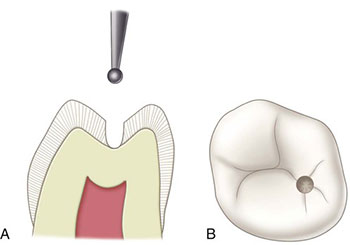
When should fillings be repaired?
Although fillings can last for years without repair, if you have habits such as grinding and grinding your teeth, your fillings will wear out sooner and need to be repaired.
If you notice signs of wear such as cracks in the fillings, you should see a dentist for repair. If you do not see a doctor after a filling injury and seek food with the same tooth, your tooth may crack and require more complex repairs, which in turn will cost more. If the area around the fillings is rotten, your dentist may use a veneer to repair it instead of filling it a second time.
Frequently Asked Questions
ترمیم و پوسیدگی دندان : از پرکردن ها برای ترمیم پوسیدگی یا شکستگی های جزئی در دندان ها به عنوان بخشی از فرآیند ترمیم دندان استفاده می شود. دندانپزشک می تواند از پر کردن دندان برای بازیابی ظاهر و عملکرد دندان های آسیب دیده استفاده کند. این مقاله بر روی فرآیند استفاده از پر کردن برای ترمیم دندان تمرکز دارد.
برای اطلاع از قیمت ترمیم و پوسیدگی دندان با کلینیک دندانپزشکی آلما تماس بگیرید. شماره تماس: ۰۲۱۶۶۹۱۶۶۲۴
مهمترین نکته قبل از هر چیز این است که پیشگیری همیشه مقدم بر درمان است .درحفظ و نگهداری دندانهای خودکوشا باشید. حتی در صورتیکه در دندانهای خود دردی احساس نمیکنید ویا هیچ مشکلی در دهان و دندان خود ندارید باز هم جهت پیشگیری هر شش ماه یکبار به دندانپزشک مراجعه نمایید. بعد از هر وعده غذایی دندانهای خود را مسواک بزنید و حتماً از نخ دندان استفاده نمایید. رژیم غذاییتان را در جهت مصرف کمتر مواد قندی برنامه ریزی کنیدو مصرف مواد قندی را به حداقل برسانیدو مواد قندی را در فواصل وعده های غذایی مصرف نکنید. ترمیم و پوسیدگی دندان چیست؟
هزینه ترمیم و پوسیدگی دندان چقدر است؟
قبل از ترمیم دندانها باید چه کارهایی انجام بدیم؟

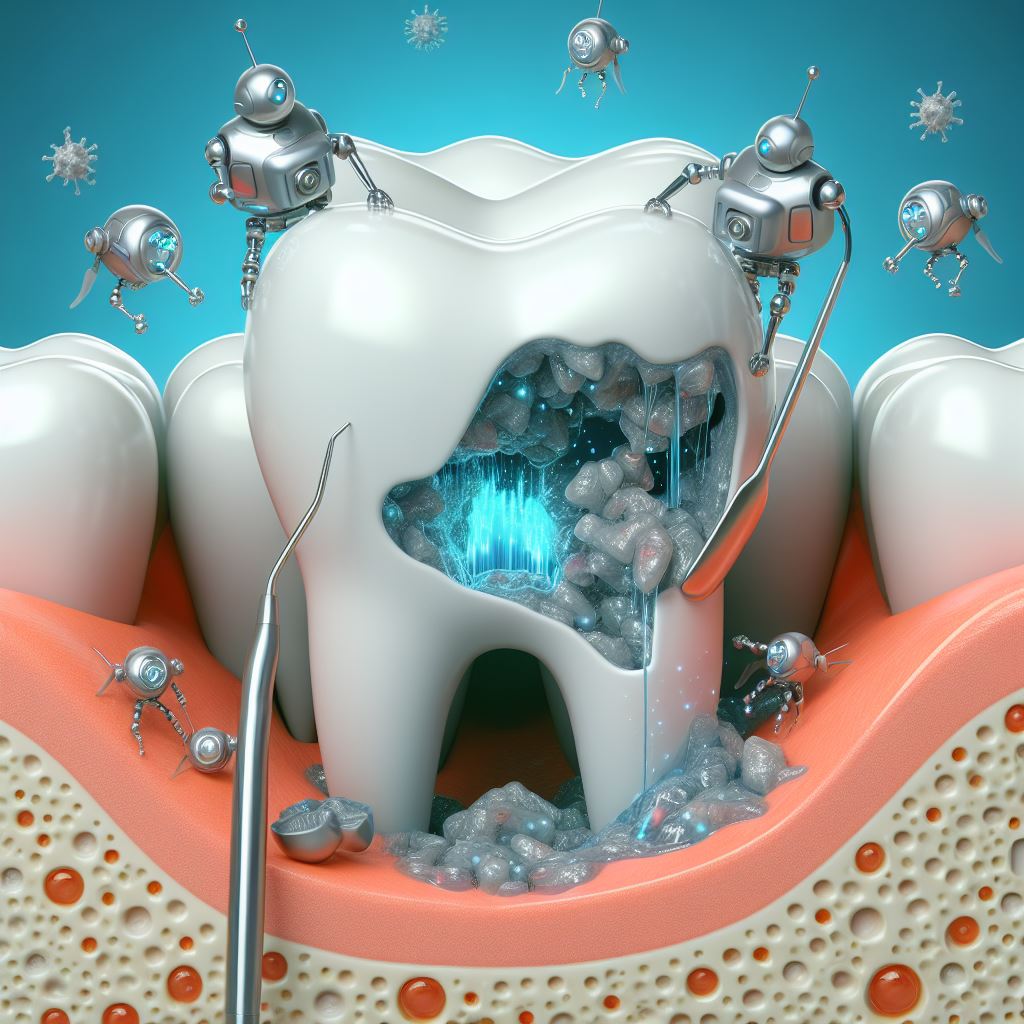
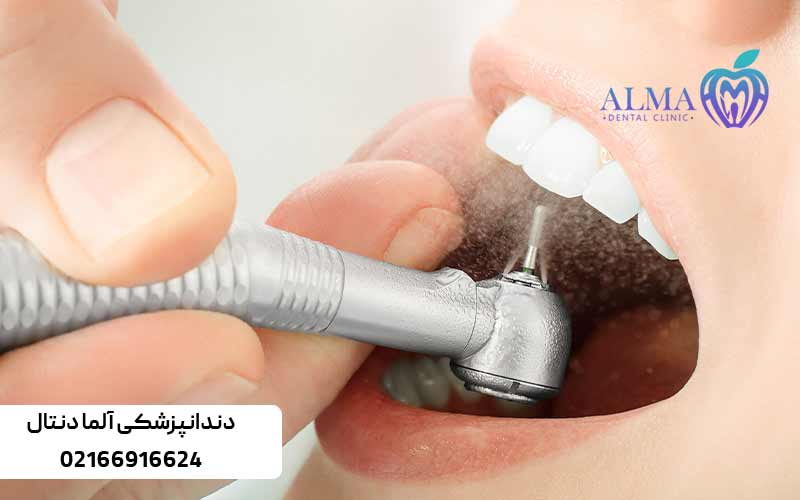
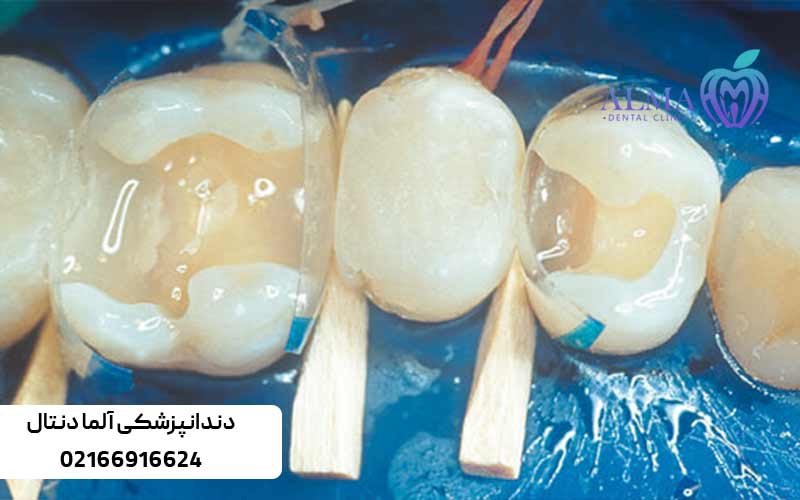
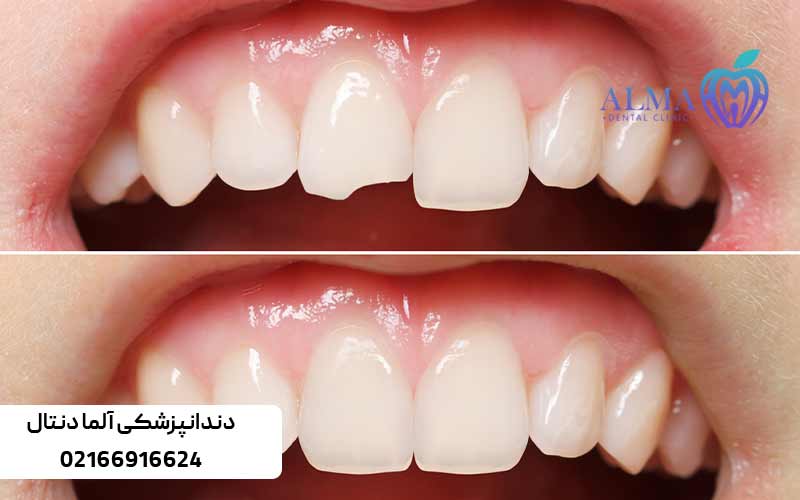
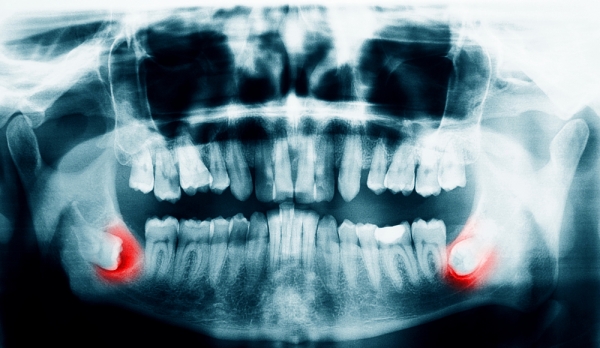
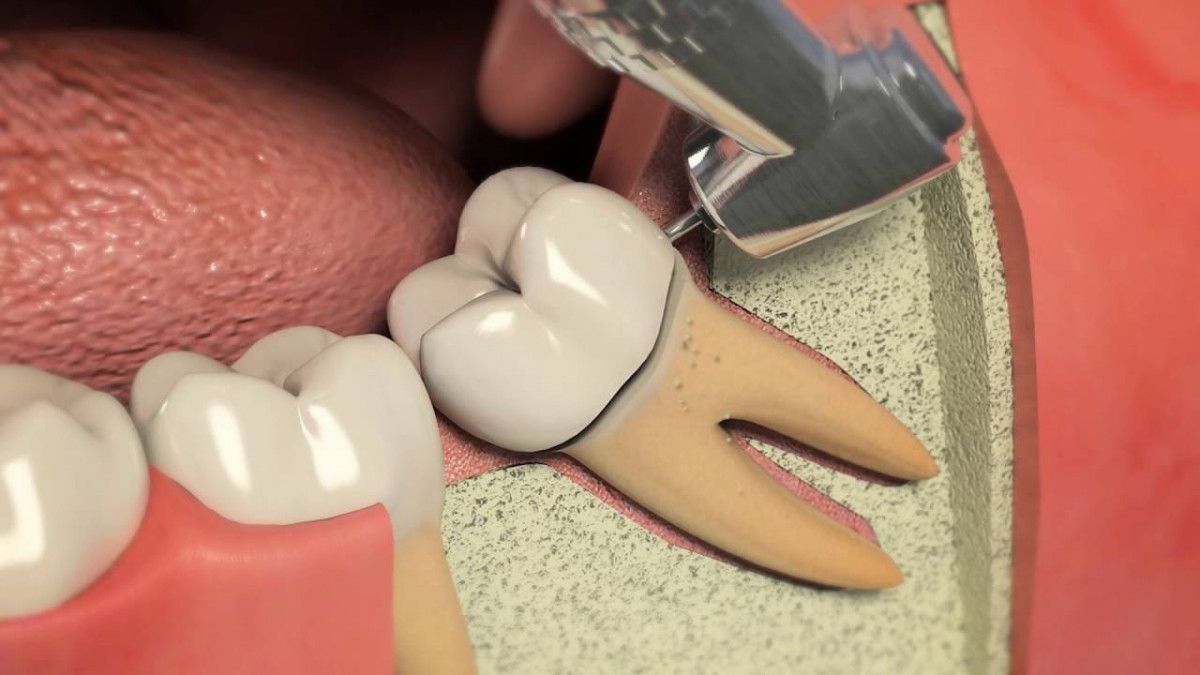

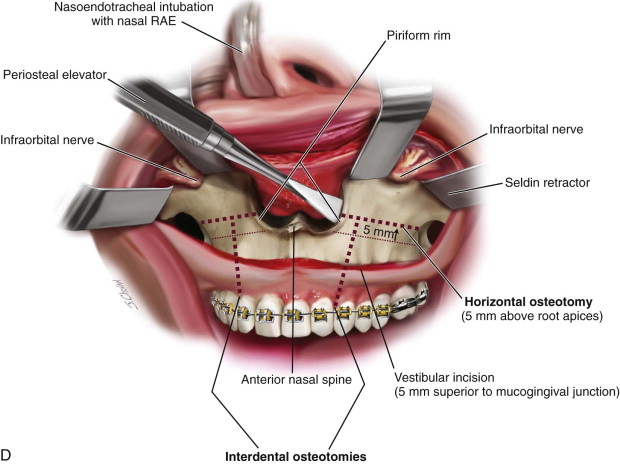
4 Responses
سلام وقتتون بخیر
هزینه ترمیم و پوسیدگی دندان چقدر است؟
سلام وقت شما هم بخیر
جهت مشاوره حضوری و کسب اطلاعات بیشتر با متخصصان ما در کلینیک دندانپزشکی آلما تماس بگیرید. شماره تماس: ۰۲۱۶۶۹۱۶۶۲۴
سلام وقتتون بخیر
قبل از ترمیم چه کارهایی باید انجام بدیم؟
سلام وقت شما هم بخیر
مهمترین نکته قبل از هر چیز این است که پیشگیری همیشه مقدم بر درمان است .درحفظ و نگهداری دندانهای خودکوشا باشید. حتی در صورتیکه در دندانهای خود دردی احساس نمیکنید ویا هیچ مشکلی در دهان و دندان خود ندارید باز هم جهت پیشگیری هر شش ماه یکبار به دندانپزشک مراجعه نمایید. بعد از هر وعده غذایی دندانهای خود را مسواک بزنید و حتماً از نخ دندان استفاده نمایید. رژیم غذاییتان را در جهت مصرف کمتر مواد قندی برنامه ریزی کنیدو مصرف مواد قندی را به حداقل برسانیدو مواد قندی را در فواصل وعده های غذایی مصرف نکنید.
جهت مشاوره حضوری و کسب اطلاعات بیشتر با متخصصان ما در کلینیک دندانپزشکی آلما تماس بگیرید. شماره تماس: ۰۲۱۶۶۹۱۶۶۲۴